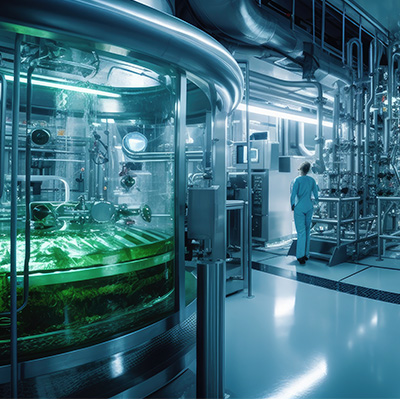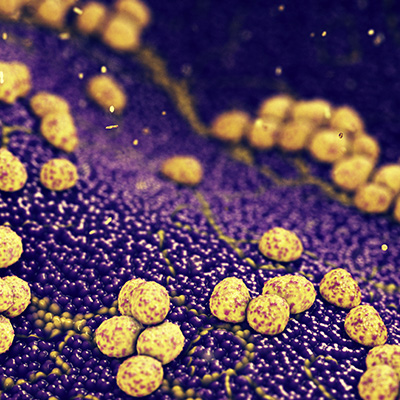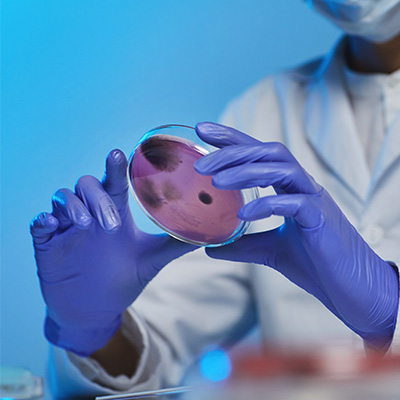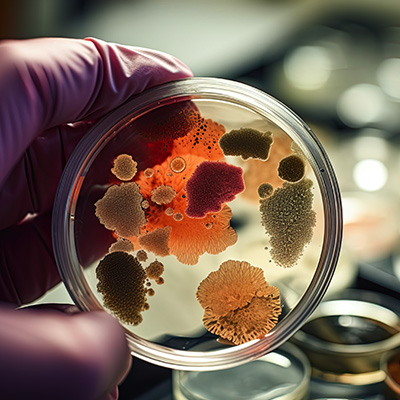Staphylococcus aureus
S. aureus is a Gram-positive bacterium, commonly found in the upper airways and on skin.
S. aureus can cause a wide variety of disease including skin and soft-tissue infections, pneumonia, and deep-seated infections that cause major morbidity and mortality worldwide. Effective antibiotic treatment is becoming increasingly difficult because of growing resistance. Deep-seated infections are difficult even in absence of resistance for unknown reasons.
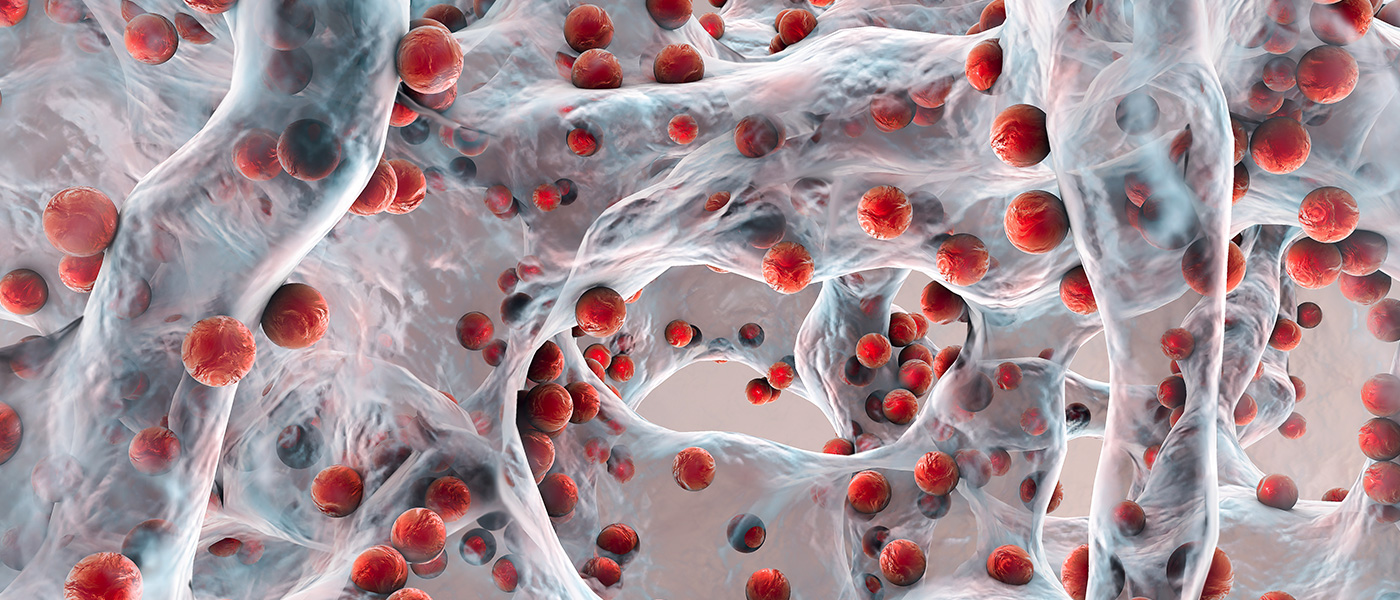
NCCR AntiResist aims to unravel mechanisms that enable S. aureus tolerance to antibiotics, and to develop patient-mimicking in vitro models that enable discovery of novel, more effective eradication strategies. We focus on deep-seated joint infections, pneumonia, and skin abscesses. Mass spectrometry, imaging, and molecular biology are used to determine S. aureus localisation and properties, local metabolite and antimicrobial concentrations, and in-situ killing efficacy of antimicrobial chemotherapy.
Based on this information, physiologically relevant in vitro models are developed. These models and analytical workflows support collaborative drug discovery programs with industrial partners aiming at non-conventional strategies.
Our three focus approach
- To obtain and analyse S. aureus cells from implants, deep-seated tissues and airway infections and skin abscesses.
- To develop patient-mimicking in vitro models with relevant S. aureus physiology.
- To establish and utilise assays for non-conventional anti-virulence inhibitors.
Leadership of Staphylococcus aureus research

Leader:
Dirk Bumann »

Co-leader:
Annelies Zinkernagel »


